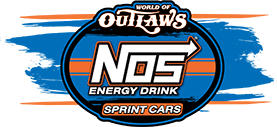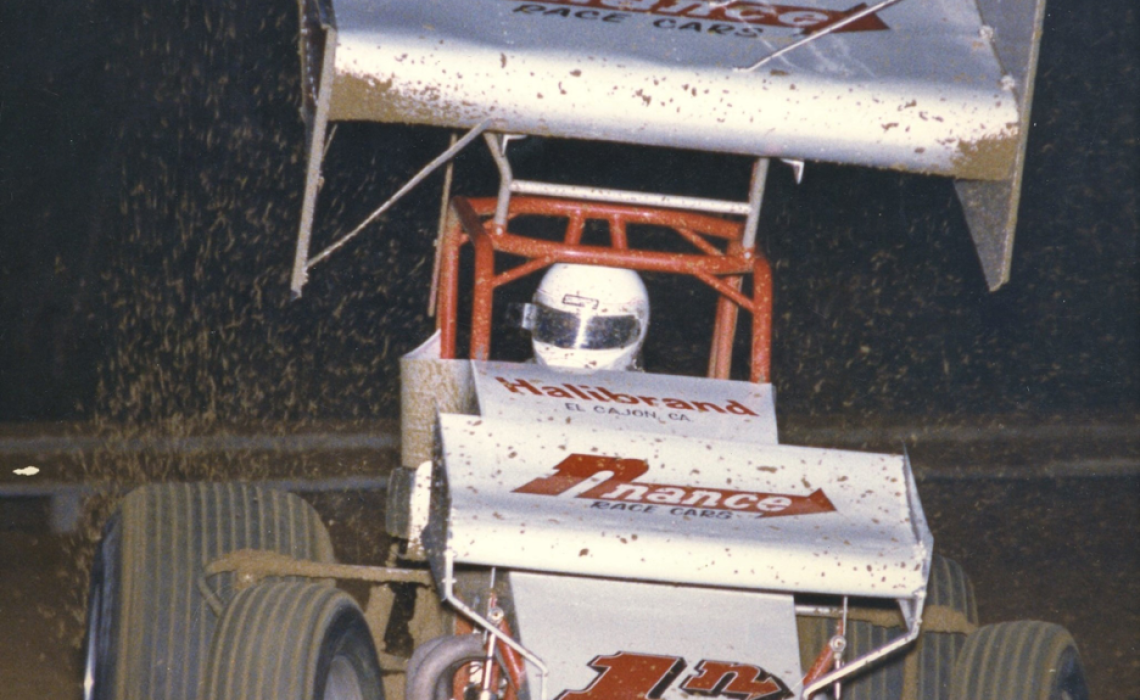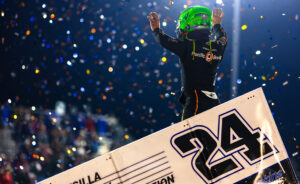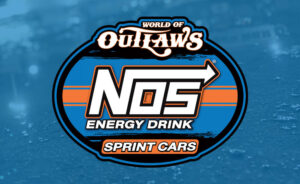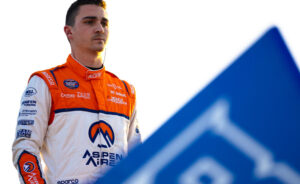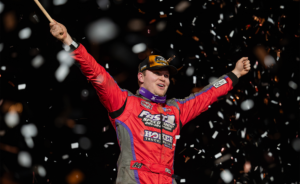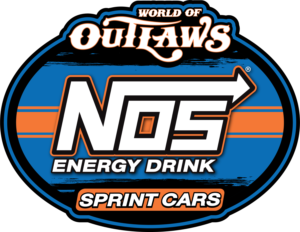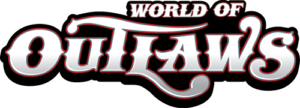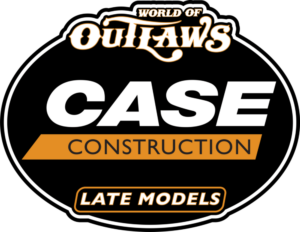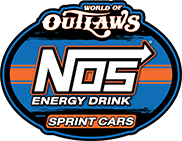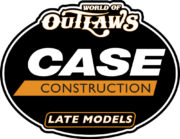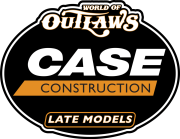Kansas conjures various images: “Wizard of Oz” courage, herds of cattle, staunch conservatives, amber waves of grain, “Carry On Wayward Son.” Sunflower State grows no pro sport but college basketball at the University of Kansas holds fanatical appeal and much ESPN money. NCAA championships in 1952, 1988 and 2008 fanned those flames. “Rock chalk, Jayhawk!” is their battle cry.
What on God’s Green Earth is a jayhawk? No such bird was on Noah’s Arc. Jayhawkers were actually guerilla fighters who returned from civil war. Some tried to prolong slavery by earning “Bleeding Kansas” revulsion. Jayhawks make dubious mascots though a good notch below Oklahoma Sooners when comparing killers to real estate pirates.
How did Kansas become a bastion of purity and piety? By being first to ban alcohol in 1881. There remain 29 of 105 counties with no beer. No coincidence that the Catholic Church has more adherents in Kansas than anywhere else. Kansas has not elected a Democrat to the Senate since 1932. Republicans of Kansas gave Dwight D. Eisenhower to D.C. After helping win World War II, Ike served two terms as President in 1953-61. While fighting Germans on superior roads, Eisenhower saw the folly of dragging through wagon ruts. His vision of an interstate highway system took root in 1956 and racers from the International Motor Car Association to the World of Outlaws do thank Ike for his service.
Kansas was a great place for a four-lane because only 14 states are bigger and only 16 have less residents. Jayhawks concede 90 percent of its turf to agriculture: cattle, sheep, corn, cotton. Blue ribbons get pinned to pigs at fairs such as Kansas State festival in Hutchinson or Mid-America Fair in Topeka. Hutch and Topeka pulled some of the first sprint cars to Kansas in 1950. Kansas IMCA winners touted Jud Larson, Parnelli Jones, Gordon Woolley, Jay Woodside, Jan Opperman and Ralph Parkinson Jr. IMCA added the North Kansas Free Fair at Belleville where Bobby Unser “parked it” as its master and victim Bryan Clauson liked to say.

Indianapolis 500 heroes helped grand opening gates to Lakeside Stadium in Kansas City, KS. Pat O’Connor and Bob Sweikert swept 1955 honors in the final year of AAA. Lakeside liked IMCA until 1963 when USAC arrived for wins by Don Branson, Larson, Arnold Knepper then hometown boys Greg Weld and Carl Williams.
Other than fair dates by IMCA or Big Car Racing Association, sprint cars were as rare in Kansas as vegetarians. Along with bison, curious creatures grazed on sod. They were 100 inches long with sprint snouts, square tails and slim hardtop bodies. They were called modifieds then supermodifieds then Champ Dirt Cars to make rivals of the Dirt Champ Cars of USAC Silver Crown. They played the largest stage at the state fair. When the National Championship Racing Association formed in 1971, it sanctioned Hutch and Wichita plus six tracks in Texas and Oklahoma. When the NCRA converted to sprints in 1988, 100-inch frames became final rests for the two-barrel 360 engines that had formed its feeder class. Few still roam the earth yet once in a blue moon, an old buffalo wanders out.

NCRA stars such as Woodside, Harold Leep and Thad Dosher helped Kansas crowds warm to sprint car ferocity. Jay and Thad carried 1966-67 Knoxville National honors in leather satchels. Leep fought in Japan then found his family in Wichita so he earned four titles at 81 Speedway and 1972 Grand National. Dosher came to Topeka with the Air Force and stayed to sweep 1972 WaKeeney BCRA weekend then Wichita during an IMCA championship run. Leep, Dosher and Woodside reside in the National Sprint Car Hall of Fame along with Chet Wilson, who fielded supers and sprints.
Topeka was pillaged by Kentucky’s Roy Robbins and San Diego’s Dick Fries during 1961 and ‘65 Knoxville National journeys. The first Jayhawk National at Topeka went to Greg Weld in 1962. Weld won the 1963 Knoxville Nationals, became 1965 USAC champ, made the 1970 Indy 500, formed Weld Wheels and reopened I-70 Motor Speedway in Odessa, MO. Lakeside hosted the first Jerry Weld Memorial in 1973 won by Jerry and Greg’s baby brother Ken. It carried an All Star sanction. When he became head honcho at I-70 in 1980, Greg brought his brother’s race across the river.
Topeka was home to the band Kansas, a staple of Classic Rock to this day. “Dust In the Wind” played when Topeka hosted the state’s first Outlaw event in 1979 at Mid-America or Sunflower Expo. Arizona’s Ron Shuman (Stanton 75) won that first one before Dub May (Spurlock 18) swept two nights. Two months later at Topeka was Steve Kinser’s second straight Jayhawk National.
Lakeside’s first Outlaw visit went to California’s Tim Green in 1980 when their 81 Speedway debut went to Sammy Swindell’s Federal Express. Wichita is the most crowded place in Kansas at 600k. It is home to Bombardier-Learjet at Eisenhower Airport, the state’s only commercial field. Aviation provides three of the top five private employers. Wichita is responsible for Koch Industries and Eagles guitar picker Joe Walsh, an ex-alcoholic inconvenienced by Kansas temperance. Kinser captured a third Jayhawk in 1981 just before Sunflower got plucked by progress.
Lakeside and Wichita split five Outlaw dates in 1981 when wings first flew around the Belleville High Banks. BCRA winners had been Arizona’s Jerry Miller, Joe Saldana, Roger Rager, Opperman and Larry Clark in 1976. Opperman ran the first Outlaw weekend in 1978 for Laverne Nance. Doug Wolfgang (Doug Howells 4) swept Kansas City and Belleville after averaging 111 MPH. Sammy won three in his employer’s home. Wilson and Woodside were tenth. Swindell also won in Wichita for C.K Spurlock. Lakeside closed after the 1988 Jayhawk National to provide parking for people who wager on dogs.
Five years passed before Kansas saw Outlaws again. In their ‘91 return to 81, Sammy showed the way behind TMC One. One month later during the Kansas State Fair, The Outlaws staged its first race in Hutch though not at the 10,000 seat cathedral but west of town at the former Fun Valley venue. Hutch is home to the world’s largest wheat elevator and hosted four Wheat Shocker Nationals. Two were won by “Danny The Dude” Lasoski. Salt City Speedway was Hutchinson Raceway Park when two Kinsers and Stevie Smith shared Outlaw honors. Mark Kinser added Wichita in 1992.
New Lakeside became a flash point for the pavement experiment. After its 1991 World of Outlaws season was when the club tried asphalt on a cold weekend split by Mark and Sam. The series tried another paved track in Florida then returned to K.C for an infamous practice crash that nearly silenced Doug Wolfgang. In the smoldering rubble, Wolfgang sued the speedway, series and everyone else. Outlaws never raced on asphalt again after Sammy’s sweep and protracted court fight.
Topeka Raceway Park opened as Happy Hollow in 1954. It provided shelter to the Jayhawk Nationals in 1989-93 when Joe Gaerte (Tom Wimmer 7tw) and Jack Hewitt (Phil Durst 1x) grabbed trophies. Lasoski won three of five Jayhawks at TRP, where the only Outlaw appearance in 1992 was the first official series victory by Ohio’s Kenny Jacobs and first for Indiana’s Wimmer since pooling with Bob Kramer. Two Winners were born; TRP closed in 1996.
Thunderhill Speedway opened in 1994 in Mayetta, home to 341 residents and one reservation of Potawatomie Natives. Mayetta welcomed Outlaws for ‘95-96 wins by Steve Kinser and ‘95-96 Jayhawks taken by Jacobs (Johnson u2) and Lasoski. Rain postponed the first one after John Gibson drove us from Indy to Knoxville by way of Monday in Mayetta. An odd mix did gather: Greg Blevins, Lance Blevins, Max Dumesny, Brent Kaeding, Fred Rahmer, Rick Ziehl. Race director T.J Giddings called cars to pack when interrupted by Terry McCarl, who pointed to the black sky over T.J’s shoulder. “I’m no meteorologist but…” It rained as hard as heavenly possible. I could not avoid breaking the seal on Nationals beer. Thunderhill was one that got away though Gibson returned for tax-free tobacco.
The World of Outlaws kept out of Kansas for two years until its grand idea at Heartland Park Topeka, home to a vibrant drag strip. Oval organizers long salivated at tall bleachers on each side of an NHRA quarter yet only Topeka turned them into a temporary dirt track. It was unpopular with everyone but Johnny Herrera and Andy Hillenburg because they each banked 20k. Heartland erected a real oval in 2001-02 when “Danny The Dude” won three of four. Schatz hammered Heartland in 2007-08.
New Lakeside became old asphalt when Missouri River silt covered the place in 2000. The World of Outlaws Support Series tested the waters (The Dude won) before two Kinsers and Daryn Pittman topped 2001-03 Lakeside cards. Seven years passed but the club has kept perfect attendance for the last decade. Lakeside wins included a hometown celebration by Brian Brown in 2017. Eight years earlier, Brownie had scaled Thunderhill for the first feature win of his life.
Jetmore Motorplex opened as Great American Dirt Track on June 23, 2001 and closed in 2013. The only Outlaw show at Jetmore occurred in 2003. It marked the first series victory by Australia’s Brooke Tatnell and only such score by Courtney Grandstaff’s famous Trop Artic 66.

Wichita and Belleville ended long absences when Outlaws returned in 2004 and 2011. Wichita’s first date in 12 years went to The Dude. Pittman won at Wichita one year later and Schatz snared 2006 and 2017. Belleville broke its 30-year gap with a program claimed by Paul McMahan (Kahne/Roth 83) after averaging 130 MPH. Outlaws returned in 2012 when Kerry Madsen made off with 10k.

Dodge City’s Boot Hill track raced sprints and supers from the flood of ‘65 through 1995 when Wright Park replaced its raceway with a zoo. Much like Lakeside, the absurdity of asphalt at Dodge City Raceway Park eventually created a sparkling palace for “The Greatest Show On Dirt.” Kasey Kahne Racing has nine wins in 22 DCRP dates. The first Kansas conquest by Brad Sweet came at Lakeside in Hahn’s wingless Bandit series of 2006.
All totaled, Kansas has held 86 features for the World of Outlaws on 13 courses with Swindell (13), Schatz (12) and Kinser (11) leading winners. The only two drivers with Sunflower roots to defeat The Outlaws were Wichita’s Jerry Stone and Liberal’s Tony Bruce Jr. The only car owners to turn the trick were Shawnee’s Bob Vielhauer and Wichita’s Laverne Nance though Nance emerged as 1981-82 champion courtesy of Sammy Swindell.
Stone was solid. He first won at Belleville in 1970 and added the 1976 Grand National at Kansas State. Curtis Edens and Jerry journeyed to most of the 1979 Outlaw season peaking second at Jackson (TN) and sixth on Indy Mile then eighth at Gold Cup. He cracked finals at Knoxville Nationals and Western World yet sprint cars were shoved aside when hired by Lloyd K. Stephens of the Oklahoma Fixture Company. Ofixco funded five Outlaw seasons for Shuman, owned one USAC unit and NCRA teams for Stone, Tony Armstrong and Pete Frazier. Lloyd liked hydroplane boats too. Stephens and Stone stacked 1982-84 NCRA titles. Lloyd liked Jerry enough to underwrite 1985-86 in Central PA. In their first hundred starts, second at Selinsgrove was best. A second season produced one win at S-Grove and third at Tuscarora 50. Ofixco exited the racing game after 1986. Stoney stayed for a third PA campaign in the Fetter Ford that won at W-Grove and Hagerstown. He opened 1988 for Bob Lesko, Bud Lawrence and Bill Brian then headed home. Stone chipped off eleven in seven Tulsa seasons highlighted by that 1992 Outlaw upset. Tommy Worth owned the Buckley that NCRA’s 1991 champ used to win from Grand Forks to Path Valley, PA. Stone and Mike Schiesel shook Creek County and Las Cruces for checkered flags from the American Sprint Car Series started by Emmett Hahn. Jerry raced as recently as 2004.

ASCS was the brainstorm of Hahn, winner of the first NCRA Grand National in 1971. Hahn had secured Tulsa Expo for the first Chili Bowl Midget Nationals in 1987. NCRA added its 360 class in 1990; ASCS began in 1992. Together they spawned a revolution restoring sprint cars to Kansas, Oklahoma and Texas.
Tony Bruce Jr. was one product. Tony Sr. fielded a winning 100-inch Stanton for Swindell, Peters and Greg Wooley in 1985. Tony Jr. was second at Kansas State in 2003 then second at Waco and Ada ASCS regionals. He won at WaKeeney, scored sixth with Vegas Outlaws and hit that trail in 2007 for third at Charlotte. Bruce began 2008 by beating ASCS at Dallas and Hartford (SD) then Outlaws at Burlington (IA) and I-30 for 15k. He was second with Riverside Outlaws and third with Cameron All Stars in 2009. One of sprint racing’s youngest promoters, Bruce began the Steve King Memorial for his friend from Jetmore who ruled 2002-03 NCRA seasons only to die at the 2006 Knoxville Nationals.
The most significant Kansas contribution to the World of Outlaws was Laverne Nance, who came to Wichita during WWII. Nance built a sprint car for Eddie Leavitt in 1972. Nance Speed Equipment was born in 1973. They built an all-aluminum car for Fred Linder in 1976. Laverne took Opperman to the Dirt Cup and sent the car to Syracuse for Michigan’s Curt Kelley. In 1979, Nance took Kelley to Saint Pete pavement, Jack Hewitt to Texas, Linder to Oklahoma, Al Hager to Nationals and Mike Peters to Denver. Nance and Peters were sixth at Granite City on the 1980 Outlaw trail. When they reached Wichita, the car owner hired Sammy, who won 58 Outlaw races. Six months saw eight men audition as successor from Jimmy Horton and Danny Smith to Wolfgang, Wooley, Rickey Hood, Kelly Kinser, Jimmy Sills and Jeff Swindell. Nance tried Giddings then Smith again but parked after the 1985 Nationals. Herb Copeland and Bob Ewell were winning with the 100-inch model so Laverne threw 1986 sprint support behind Daryl Saucier and Jac Haudenschild. He shipped another car to Ohio’s Marshall Campbell for All Star wins by Sills and Hood. He never again focused on sprint cars but did send four cars across town for CRA in 1993 when Nance Speed Equipment was sold to Halibrand.
Sammy Swindell turned Nance into a World of Outlaws champion and sold many cars. Over two decades later, Sammy brought the first series checkered to “Beaver Bob” Vielhauer. Beaver Tool & Drill took “Tiger Bob” Williams to Florida in 1981. Vielhauer and Sonny Smyser were 1982 winners at Eagle, Kansas City (KS) and Kansas City, MO. Bob took Jerry Potter to the 1983 Nationals. Shane Carson had Vielhauer’s vehicle in 1986 when he was not winning with Pat Suchy’s 100-inch Gambler. Shane’s subs included Roland Johnson and Shuman at Knoxville when Ron needed Outlaw points. Bob hired Brent Kaeding for Colorado and drivers in 1987 were Terry McCarl, “Okie Andy” Hillenburg, Armstrong, Lealand McSpadden and son Billy Vielhauer. He filed a 1992 Nationals entry for Steve Siegel then hired Peters and Peter Murphy. Danny Smith had Beaver Bob’s job in 1993 to win at Kansas State, Tulsa, Bethany, Danville, Paragon, Eldora and Sedalia 360/410 sweep. Danny was fourth against Outlaws at Bloomington then third at St. Augustine. Splitting after Illinois Speed Week, Vielhauer switched to Stevie Smith, who reached third at LaSalle, IL. Beaver took Shane Stewart to the 1999 Nationals. Bob won at Knoxville with Wayne Johnson and Blake Feese. Vielhauer and Sammy swept Bandits out of The Bowl, smoked Outlaws in Sioux Falls and walked off with 30k from the 2004 Don Martin Memorial in a basic curtain call for Beaver Bob.

Mike Peters earned five titles in OKC, two in Tulsa, two in Dewey, two more with NCRA, and achieved victories on 26 ovals in seven states. Third at Eagle with Durst Motors in 1991 marked his Outlaw best. Mike began 1985 in sprints and supers owned by C.L Boyd and Buzz McDonald. He crossed seventh against 1987 Outlaws in Tulsa with Beamon 97. Peters and Jeff Gilliam opened the 1991 Outlaw season fifth at OKC and ninth on Indy Mile before Mike and Grandstaff started a seven-year run. They were sixth at Fram Dash then swept the Dallas NCRA weekend worth 10k. They were 1992 Knoxville winners. Once the team added 360 to 410, victories spiked to 24 in 1994-95. They took another 10k from The Bowl but this time used an ASCS 360. Mike Peters raced to the end. He was 2008 NCRA champ at age 57 and died in 2018.

The largest sprint car trophy room in Sunflower State is Garry Lee Maier’s ranch in Cimarron. All were earned with 360 cubic inches except 1989 Wheat Shocker and 1990 Wichita NCRA with Mussatto 410. Fourth at OKC was Maier’s best Outlaw outing. He quit motocross to win at Lawton in 1982; was a rookie to the 1988 Knoxville Nationals; won 28 times in 1992 and the first ASCS championship; notched 1993 Knoxville 360 Nationals for second straight year; won 1996 ASCS races from Rocky Mountain to East Bay, FL; took 1997 ASCS wins from Corpus Christi to Valdosta, GA; added 1997 ASCS accolades from Dallas 10k to Prestonsburg, KY; beat NCRA on Belleville’s quarter in 1998; was 2000 winner in Edmonton, AB; topped Hollywood Hills ASCS in 2002; and landed Lubbock USAC honors in 2003. Lubbock’s Scott Brown brought Garry regional ASCS acclaim at Dodge in 2004. Maier was NCRA champion four times in five years.

Liberal’s Jason Martin matched Maier’s fourth-place with the 2007 World of Outlaws at Paducah, KY. Martin became a 2005 ASCS winner at Cowtown and rookie to the 2006 Outlaw trail when he was sixth at Jackson and eighth at Elbridge, NY. Tenth at The Grove was another noteworthy night to Jason’s sophomore season. Martin moved his family to Nebraska to work for Speedway Motors. He found URSS 305 success in 2015-16 at Dodge and LaCrosse, KS.
T.J Giddings of Kansas City (KS) was a shooting star. Sixth against 1981 Odessa Outlaws with Vielhauer 12x, they won at Lakeside before Giddings teamed with Marty Johnson and Terry Taggart of Sioux City, IA. They won Marshall and Mason City in 1982; stacked seven more in 1983 at Knoxville, Lakeside, Odessa and Oskaloosa; earned eleventh at Nationals then fifth at Knoxville in T.J’s best Outlaw result. Chris Zootis flew him to Chico for tenth at the Gold Cup. He won in Sioux Falls and Cedar Rapids in 1984-85. Giddings followed Stone to Central PA for two horrible months in the Fetter Ford; handled Hawkeye Downs for Gil Sonner in 1987; raced for Larry Ball and Guy Forbrook in 1988; then Knoxville once in 1989 aboard the Vanderwoude 2v.
Osage City’s Gary Mussatto did everything but drive. Mussatto was car owner and crew chief plus promoter of Outlaw events at Topeka and Hutch. He brought “Tiger Bob” Williams to Knoxville Nationals and Nebraska’s Lloyd Beckman to the 1978 Western. He took Peters and Jon Johnson to 1980-82 Nationals and became a Knoxville winner in 1983 with Parkinson Jr. He started 1984 with Darrell Hanestad then won at Knoxville and I-70 with Randy Smith. He tried Joe Saldana and Marlon Jones in 1984 then netted sixth at Sedalia and ninth at Syracuse with Tommie Estes Jr. Gary’s drivers in 1985 were Estes, Peters and Iowa’s Bruce Drottz. Mussatto’s 1988 employees included Peters and Don Droud Jr. Danny Thoman tried out in 1989-90 but was replaced by Maier, Al Hager and Kevin Huntley. More recently, Topeka’s Chris Morgan has benefitted from Mussatto mentoring.
Iola’s Dan Oswalt operated a string of Sonic burger stands that coined his “Dan Dan The Sonic Man” label. As driver, Dan did a dozen sprint seasons without distinction. As car owner, Oswalt owned quality equipment. Justin’s dad Rod Henderson had Sonic seats in 1992 to finish first at Sioux Empire and second in Sioux Falls then wintered in the Arizona TNN series. Dan swapped Rod for Marlon Jones, another South Dakota resident second at Knoxville and Jackson then seventh on one Canyon TNN telecast. Oswalt and Jones enjoyed seven wins in five Huset’s seasons plus 5k from Grand Forks. Eighth at Eagle in 1996 was series-best for Marlon and Dan Dan.
Chanute shyster Louie McAlpine blew through the World of Outlaws like petroleum stink. Lou brought Gary Dunkle out of retirement, bought a second Nance for himself, towed them from Tampa to Phoenix then reopened “Badlands” in Yates Center, KS. Louie vowed Sunday night sprint races paying Outlaw standard. After one week he cut the purse. After two weeks he locked the doors. McAlpine flanked Dunkle with Tony Armstrong, who took ninth against 1988 Knoxville Outlaws then chased from Ascot and San Jose to the USA opener at East Alabama before McAlpine felt the heat. Louie landed in prison for fraudulent oil and gas leases.
Utica’s Jon Johnson was called “Kansas Tornado” for tearing the roof from 100-inch competition but Jon was never better than 12th at Wichita with World of Outlaws. Second at the 1978 Grand National, Johnson won it in 1981 for Steve’s father Danny King. He won a sprint race on Denver’s new Raceland oval in 1982; tried the 1984 Knoxville Nationals in Ream Nance; was 1987 Wichita sprint winner for Nance; fourth in 1990 at Casa Grande, AZ; notched Enid, Grand Island, Belleville and LaCrosse to become 1998-99 NCRA champ; won at Kansas State and Amarillo and was active in 2004. Many recall Johnson as Rich Vogler’s victim of 1986 opening lap contact that sent Laverne’s car tumbling down Oklahoma City’s back chute. There was no injury but such hostility that a hole was cut in the fence to allow Vogler to escape a lynch mob.
Danny Wood and Donnie Woodburn went from NCRA 360 circuit to five wins with the 2001 World of Outlaws tour. Woodburn won ten more with Daryn Pittman while Wood came home to resume waxing Wichita NCRA troops. Worse for Kansas parity was Michigan’s Jeremy Campbell leaving Outlaws and All Stars to marry Dwight Schroeder’s daughter Katie. Three titles in nine NCRA seasons have followed. Now that he has a 305, Jeremy seldom loses.

Dodge City drips with Wild West imagery from Wyatt Earp to Doc Holliday. It was the fictional home of the “Gunsmoke” radio show that became television’s longest series in 1955-75. And if viewers cannot find Marshall Dillon reruns, surely they can see Dorothy and Toto flee a green woman obsessed with red shoes.
ok
